Working on the Holidays
Apparently there is a growing backlash against big-box stores opening on Thanksgiving, with threats of boycott in the air:
The list of big-box retailers opening their doors on Thanksgiving Day is growing, and so is the list of consumers threatening to shop elsewhere.
Macy’s Inc. (NYSE:M) is joining the ranks of retailers offering turkey-day deals in 2013, marking the first time in its 155-year history that it will open for business on Thanksgiving. It joins numerous stores that have done so over the last few holiday seasons, with many opening their doors earlier and earlier each year.
Target Corporation…said this week that it will open at 8 p.m. on Thanksgiving night, an hour earlier than it did in 2012. Best Buy…and…Toys R Us Inc. also plan to open earlier this year….
Many workers — and shoppers — say they’ve had enough. On social media and online petitions across the Internet, opponents are sounding off, demanding that companies allow workers to spend Thanksgiving at home with their families. The word “boycott” is being thrown around routinely, particularly on Twitter…
First of all, in terms of rights, there is obviously nothing objectionable about organizing a boycott for any reason whatsoever, so long as it is truly voluntary and merely involves a coordinated effort to refrain from patronizing targeted businesses.
Second, I hate unbridled consumerism as well, and can’t believe people would want to do anything Thanksgiving evening besides pass out on the couch.
But notwithstanding these caveats, I think this outrage that we hear every year is oddly selective. For example, should all gas stations, highway toll booths, bus stations, and airports be closed on Thanksgiving? If so, that would prevent a lot of people from “spending the holidays with their families.” Even if your sole criterion were to boost the amount of time people spend with their loved ones, you would need at least some critical workers at their posts on Thanksgiving Day (at least the morning and afternoon).
Beyond that, my parents are in town and we’re planning on seeing a movie before our meal. Obviously someone is going to have to be working at the movie theater for that to be possible. But I don’t see any problem here; I’m not forcing that person to be there. He or she is presumably getting higher pay for working on a holiday.
When I was younger and worked at the grocery store, I used to love working shifts on holidays. You didn’t have to putz around the house awkwardly with your relatives for a long time, you would roll in when you were done with work. You’d still see everybody, you just weren’t there the whole time. And you got paid a lot more.
More generally, there are people who don’t have family, or maybe they get really depressed on the holidays and like to keep busy with work. It’s a great solution that they are the ones who will volunteer for the holiday shifts if the other employees would rather take off.
The marketplace is a vast nexus in which people voluntarily interact, with prices guiding their decisions. It would be more convenient for workers at Best Buy if everybody would concentrate his or her electronics purchases between noon and 5pm; that way the Best Buy workers could sleep in till 11am every day. But on the other hand, that would be really inconvenient for the shoppers if Best Buy were only open from noon to 5pm on a typical day. So that’s not what happens in the market.
We see extremes in either direction, too. Certain grocery stores are open 24-7, while certain restaurants might only be open for select chunks of time catering to lunch and dinner. Again, market prices and the implied profit-and-loss signals guide all of this, but ultimately everything is voluntary. An employee who is “forced” to work Thanksgiving night might feel like a slave, but of course this is not literally correct; he or she can always quit if it’s that big a deal.
The only reason stores engage in “Black Friday” (and now Thursday) deals is that this is (apparently) profitable. To repeat, I agree that such displays–especially the people lining up outside stores and then stampeding in–are absurd. But the critics often seem to me to overstate their case, and fail to understand that this is just a specific application of a more general framework, where they happen to dislike this particular outcome.
Yet More Incontrovertible Evidence That Krugman Believes the Fed Can Create Bubbles
[UPDATE in text.]
This is really funny, to see the Krugman defenders in the comments being reduced to such grasping. (In fairness, at least one of the people involved is motivated not by his love for Keynesian policies, but by his love to contradict me.) So let me offer yet even more damning quotations to show that Paul Krugman believes that the Fed had the power in the past, and retains the power today, to create asset bubbles, UPDATE: that one such mechanism to cause such bubbles is to lower interest rates, and that such bubbles can stimulate aggregate demand in order to pull the economy out of a recession.
(Those of us on the Krugman Beat have known about these for years, but I thank Bob Roddis for apparently keeping the links in a notebook by his bed.)
OK here’s Krugman in a May 2005 NYT op ed titled “Running Out of Bubbles” (but Krugman probably didn’t pick that title, FYI). I am going to reproduce virtually the entire column, because it is eerie how much it sounds like exactly what hard-money types (especially Austrians) have been saying since 2008:
Remember the stock market bubble? With everything that’s happened since 2000, it feels like ancient history. But a few pessimists, notably Stephen Roach of Morgan Stanley, argue that we have not yet paid the price for our past excesses.
I’ve never fully accepted that view. But looking at the housing market, I’m starting to reconsider.
In July 2001, Paul McCulley, an economist at Pimco, the giant bond fund, predicted that the Federal Reserve would simply replace one bubble with another. “There is room,” he wrote, “for the Fed to create a bubble in housing prices, if necessary, to sustain American hedonism. And I think the Fed has the will to do so, even though political correctness would demand that Mr. Greenspan deny any such thing.”
As Mr. McCulley predicted, interest rate cuts led to soaring home prices, which led in turn not just to a construction boom but to high consumer spending, because homeowners used mortgage refinancing to go deeper into debt. All of this created jobs to make up for those lost when the stock bubble burst.
Now the question is what can replace the housing bubble.
Nobody thought the economy could rely forever on home buying and refinancing. But the hope was that by the time the housing boom petered out, it would no longer be needed.
But although the housing boom has lasted longer than anyone could have imagined, the economy would still be in big trouble if it came to an end. That is, if the hectic pace of home construction were to cool, and consumers were to stop borrowing against their houses, the economy would slow down sharply. If housing prices actually started falling, we’d be looking at a very nasty scene, in which both construction and consumer spending would plunge, pushing the economy right back into recession.
That’s why it’s so ominous to see signs that America’s housing market, like the stock market at the end of the last decade, is approaching the final, feverish stages of a speculative bubble.
…
The important point to remember is that the bursting of the stock market bubble hurt lots of people – not just those who bought stocks near their peak. By the summer of 2003, private-sector employment was three million below its 2001 peak. And the job losses would have been much worse if the stock bubble hadn’t been quickly replaced with a housing bubble.So what happens if the housing bubble bursts? It will be the same thing all over again, unless the Fed can find something to take its place. And it’s hard to imagine what that might be. After all, the Fed’s ability to manage the economy mainly comes from its ability to create booms and busts in the housing market. If housing enters a post-bubble slump, what’s left?
Mr. Roach believes that the Fed’s apparent success after 2001 was an illusion, that it simply piled up trouble for the future. I hope he’s wrong. But the Fed does seem to be running out of bubbles. [Bold added.]
Last thing: It would not surprise me in the slightest if someone point-blank asked Krugman, “Are you admitting that continued QE will make it more likely that we will have asset bubbles?” and he said, “No I’m not admitting that, that’s a dirty lie.” But if he said that, he would be Kontradicting his established framework.
As with his warnings about skyrocketing interest rates, Krugman’s op ed above could (almost) have been written by Peter Schiff. It’s yet another example of Krugman being a decent economist when he wants to criticize big spending, loose money Republicans.
Yes, Larry Summers Is Saying Central Bank Policy Encourages Bubbles (Which He Thinks Is a Second-Best Solution Because of Secular Stagnation)
OK it took me a bit to understand the point that Keshav (and then Ken B.) were making in response to my Summers/Krugman commentary on bubbles. They (and maybe others, sorry if I’m leaving people out) were saying that yes Summers/Krugman were warning that we would have a string of bubbles, but that no they weren’t saying it was due to countercyclical (or “pedal to the metal” as Krugman put it) monetary policy. The bubbles were going to happen either way, it’s just that in conjunction with ultra-accommodative central bank policy–which is necessary because the natural rate of interest is negative, and has been for a while now–it will look like the inflation hawks are right. But actually (so say Keshav and Ken B.), Krugman/Summers were denying this connection; it wasn’t monetary policy causing the bubbles at all.
Although there are isolated passages from Krugman’s commentary that are consistent with the above interpretation, I don’t think it works. First, we have the infamous Krugman quote from 2002 saying that Bernanke Greenspan needs to replace the dot-com bubble with a housing bubble. Here’s Krugman himself in 2010 discussing that piece:
So did I call for a bubble? The quote comes from this 2002 piece, in which I was pessimistic about the Fed’s ability to generate a sustained economy. If you read it in context, you’ll see that I wasn’t calling for a bubble — I was talking about the limits to the Fed’s powers, saying that the only way Greenspan could achieve recovery would be if he were able to create a new bubble, which is NOT the same thing as saying that this was a good idea…
But did I call for low interest rates? Yes. In my view, that’s not what the Fed did wrong. We needed better regulation to curb the bubble — not a policy that sacrificed output and employment in order to limit irrational exuberance. You can disagree if you like, but that doesn’t make me someone who deliberately sought a bubble.
OK, so it’s crystal clear that Krugman thought (at least from 2002 through 2010) that, at least in principle, the Fed can create bubbles. Now from the above, it’s not totally clear whether Krugman thinks interest rates are the mechanism, but for sure Krugman thinks central banks have the power to make and break bubbles. (To clarify what I’m saying: Krugman says that better regulation could have curbed the housing bubble without the need to raise interest rates. But that still means it could have been low interest rates that set the bubble in motion; surely when Krugman said “Greenspan needs to replace…” he wasn’t suggesting that Greenspan needed to weaken oversight of the financial sector. No, Krugman meant Greenspan needed to engage in looser monetary policy.)
Now, turn to Summers’ IMF speech, which started all of this. In the excerpts below, it is pretty clear that Summers is saying that absent major reforms, the central bank will be left fighting high unemployment with tools that will promote bubbles. Those bubbles are the unavoidable consequence of not doing the major reforms, but–if those reforms are off the table–then it’s better to accept the bubbles as a necessary evil. However, if we could get the major reforms, then the central bank wouldn’t have to engage in such loose policy, and we would not get as many bubbles.
I hope no one will deny that if Summers is in fact saying what I’m claiming, then my original point in all this is vindicated: Krugman/Summers are finally saying what hard-money types have been claiming for years: Namely, that the ZIRP/QE policies have promoted asset bubbles, even though price inflation hasn’t gone through the roof and unemployment remains high.
OK on to the Summers quotes from his IMF speech, to bolster my interpretation given above:
If you go back and study the economy prior to the crisis, there is something a little bit odd. Many people believe that monetary policy was too easy. Everybody agrees that there was a vast amount of imprudent lending going on. Almost everybody agrees that wealth, as it was experienced by households, was in excess of its reality. Too easy money, too much borrowing, too much wealth. Was there a great boom? Capacity utilisation wasn’t under any great pressure; unemployment wasn’t under any remarkably low level; inflation was entirely quiescent, so somehow even a great bubble wasn’t enough to produce any excess in aggregate demand.
…
So what’s an explanation that would fit both of these explanations? Suppose that the short-term real interest rate that was consistent with full employment had fallen to -2% or -3% sometime in the middle of the last decade. Then what would happen? That even with artificial stimulus to demand coming from all this financial imprudence you wouldn’t see any excess demand. And even with a relative resumption of normal credit conditions you’d have a lot of difficulty getting back to full employment.Yes, it has been demonstrated absolutely conclusively, that panics are terrible and that monetary policy can contain them when the interest rate is zero. It has been demonstrated, less conclusively but presumptively, that when short-term interest rates are zero, monetary policy can affect a constellation of other asset prices in ways that support demand, even when the short-term interest rate can’t be lowered. Just how large that impact is on demand is less clear but it is there.
But imagine a situation where natural and equilibrium interest rates have fallen significantly below zero. Then conventional macroeconomic thinking leaves us in a very serious problem, because while we all seem to agree that whereas you can keep the federal funds rate at a low level forever, it is much harder to do extraordinary measures beyond that forever, but the underlying problem may be there forever.
Why does Summers say, at the very end, you can’t do extraordinary measures (which means things like QE) beyond that forever? He doesn’t give his answer, but in the context of his (short) speech, I think he’s saying because it will blow up asset prices too much and policymakers will back off.
And now, to me, the smoking gun. Here’s what Summers is worried that policymakers will do, who misread the situation (not realizing we have secular stagnation) and tighten:
One has to be concerned about a policy agenda that is doing less with monetary policy than has been done before, doing less with fiscal policy than has been done before and taking steps whose basic purpose is to cause there to be less lending, borrowing and inflated asset prices than there was before.
OK, so earlier we have Summers saying that even when interest rates are at zero, central banks have demonstrated their ability to increase asset prices through unconventional measures. (I put that part in bold in the second last block quotation.) And then here, in the final block quotation, he says that he’s worried policymakers will stop trying to inflate asset prices.
In conclusion, it seems clear to me that both Krugman and Summers believe the central bank has the power to create asset bubbles, and that the looser monetary policy is, the more likely bubbles are to occur. I am surprised I have had to post three separate times to establish this point, but hey, the critics in the comments keep me honest.
An Example of Krugman Pooh-Poohing Current Bubble Concerns
In the comments of my recent post, in which I said Krugman was significantly retreating from his earlier stance about Fed policy causing bubbles, naturally some of Krugman’s defenders claimed I was inventing things, and that Krugman has been worried about bubbles all along.
Here’s Krugman from May, 2013:
So do we have a major bond and/or stock bubble? On bonds, I’d say definitely not. On stocks, probably not, although I’m not as certain.
…
The Fed normally cuts rates when unemployment is high and inflation is low — which is the situation today….[I]t’s hard to see why the Fed should raise rates until unemployment falls a lot and/or inflation surges, and there’s no hint in the data that anything like that is going to happen for years to come.Why, then, all the talk of a bond bubble? Partly it reflects the correct observation that interest rates are very low by historical standards….
There’s also, one has to say, an element of wishful thinking here. For whatever reason, many people in the financial industry have developed a deep hatred for Ben Bernanke, the Fed chairman, and everything he does; they want his easy-money policies ended, and they also want to see those policies fail in some spectacular fashion. As it turns out, however, dislike for bearded Princeton professors is not a good basis for investment strategy.
…All in all, the case for significant bubbles in stocks or, especially, bonds is weak. And that conclusion matters for policy as well as investment.
For one important subtext of all the recent bubble rhetoric is the demand that Mr. Bernanke and his colleagues stop trying to fight mass unemployment, that they must cease and desist their efforts to boost the economy or dire consequences will follow. In fact, however, there isn’t any case for believing that we face any broad bubble problem, let alone that worrying about hypothetical bubbles should take precedence over the task of getting Americans back to work. Mr. Bernanke should brush aside the babbling barons of bubbleism, and get on with doing his job. [Bold added.]
Now it’s true, in that same op ed he acknowledges that the dot-com and housing bubbles were, in fact, bad things. I didn’t say otherwise. My point is that during our current crisis, Krugman has been pooh-poohing people complaining about Bernanke, by pointing out that we have modest price inflation.
But now, in his latest elaboration of the Summers/Krugman “secular stagnation” thesis, Krugman is admitting that textbook central bank action to fight high unemployment will yield a string of bubbles. He and Summers are now babbling barons of bubbleism.
Clarifying the “Tax Interaction Effect”
David R. Henderson favorably reviewed Ross McKitrick’s presentation (at IER’s Carbon Tax conference last summer) on the “tax interaction effect,” and then in a follow-up post David pursued Greg Mankiw’s writings on the topic.
In the comments of David’s second post, someone wrote:
If my microeconomic intuition — that taxing harmful externalities will enhance net welfare, and to a greater degree than some regulatory regime — turns out to be wrong, then I wonder what else I might be wrong about? After considering tax interaction effects, should we not be so hard on speeders? Maybe even encourage them? And what about theft, of various sorts? Keeping Coase (rather than Pigou) in mind, I sometimes think about uncompensated environmental externalities as a form of theft. I wonder if theft, generally, might turn out to be beneficial in some CGE model beyond my ability to comprehend.
OK, putting aside what seems to be sarcasm, it’s clear that this guy doesn’t really understand what the TIE [tax interaction effect] claim is. That’s not entirely his fault, because it’s a very subtle issue, and I don’t think the actual economists publishing on the topic have spelled it out in crystal-clear fashion. The more I think about it, the more “obvious” it seems to me, but it has taken me a long time to get here. At IER, I will soon have a post trying to walk through the whole thing, but because I explain it from scratch, it’s pretty long. In the present blog hit, let me summarize the key issues (as I now conceive them) in a hopefully intuitive way, for people who are familiar with the standard Pigovian framework.
(Note: Silas Barta had a great idea when he flipped the “stacking” of the taxes; his analysis clarified my own thinking on this.)
(A) Assume people are annually emitting 30 billion tons of carbon dioxide with no carbon tax. Assume the marginal/average “social cost of carbon” for current emissions is the same, at $30/ton. So if nothing is done, Earthlings are causing $900 billion annually in future negative externalities (present discounted value).
(B) With no other taxes, “optimal” thing to do according to textbook is to levy a $30/ton carbon tax, the receipts of which are distributed lump-sum back to citizens. Assume this makes people cut emissions in half, down to 15 billion tons. There is a reduction in climate change damages of $450 billion. However, the conventional economy is hurt; after all, businesses and consumers are now facing a constraint to use less carbon-intensive techniques. (If someone could magically cure climate change, the carbon tax would obviously hurt the economy, so it’s still having that effect now, even though we’re superimposing a stabler climate on top of the hurt economy.) Suppose that the harm to the conventional economy from the optimal carbon tax is $100 billion. Thus the net benefit of the carbon tax is $350 billion; this is the maximum, by the way, because we’re choosing the $30/ton tax optimally. If we had made it $31/ton, then climate change damages would be only $440 billion but economic damages would rise to $111 billion, putting the net gain at only $349 billion. Going the other way, if we had only set the carbon tax at $29/ton, then climate damages would be $461 billion while economic damages would be $90 billion, for a net gain of the carbon tax of $349 billion. So the optimal carbon tax of $30/ton–which is the “social cost of carbon”–maximizes the net benefits of a carbon tax, which makes sense.
(C) Now re-do the analysis, but this time suppose there was an income tax. We all know income taxes are distortionary. Suppose this income tax (considered by itself, without a carbon tax) caused $1 trillion in deadweight loss on the economy. We also know that if you increase the income tax rate, then the deadweight loss increases more than proportionally. So, if you are going to implement this identical income tax code, not starting from scratch, but on top of a carbon tax of $30/ton–which itself is already causing $100 billion in harm to the economy–then the marginal deadweight loss of the income tax code is $1.2 trillion, rather than the $1 trillion if there is no carbon tax. Thus, the “tax interaction effect” here is $200 billion. This is in addition to the $100 billion harm to the economy coming directly from the carbon tax. The tax interaction effect’s $200 billion harm is an indirect effect of the carbon tax, because it makes the deadweight loss from the income tax that much higher.
(D) With the above numbers, it’s still better to impose a carbon tax at $30/ton than to do nothing at all. Note that we are still returning the receipts of the carbon tax back to citizens in lump-sum checks. By imposing that tax, you reduce climate damages by $450 billion, while the economy suffers damages of $100 billion (direct hit) plus $200 billion (tax interaction effect), for a total hit to the economy of $300 billion. But $450 bn – $300 bn = $150 billion, which is the net gain of doing the original $30/ton carbon tax.
(E) Ah, but the $30/ton carbon tax is no longer optimal. On the margin, the carbon tax is causing more damage in the presence of the income tax, than it would in a textbook scenario with no other taxes. So if we reduce the carbon tax down to, say, $15/ton, we now achieve the optimum of a (say) $220 billion gain in welfare, from imposing the tax. This of course is lower than the $350 billion gain we achieved in (B). This makes sense too; since we have to worry about the carbon tax exacerbating the deadweight loss of the income tax, it is no longer as useful a tool, so the total social gains we can derive from it are lower than in a scenario with no tax interaction effect.
(F) Ah wait, we can actually do something better. We can use the receipts from the new carbon tax to reduce the income tax rates. In the absence of the carbon tax, reducing the rates of the income tax obviously reduce its deadweight loss; this is the “revenue recycling effect.” So now, in addition to its beneficial effects in terms of reducing emissions and hence climate change damage, the carbon tax has two other effects that cut in opposite directions: The tax interaction effect makes the income tax worse, pushing us to levy the carbon tax at less than the social cost of carbon. But the revenue recycling effect makes the income tax better, pushing us to levy the carbon tax at more than the social cost of carbon. Which effect dominates? This is an empirical question, but the intuition on this particular point (as to whether TIE <> revenue recycling) is that a carbon tax has a base smaller than a typical income tax, and so on that score you would think intuitively that raising $1 billion from a carbon tax is more harmful to the conventional economy than raising $1 billion from an income tax.
(G) In light of all the above, it is probably the case that (given our other numbers) the new carbon tax, if levied on top of the pre-existing income tax but with all carbon tax receipts being used to reduce income tax rates, will have an “optimal” rate lower than $30/ton but higher than $15/ton. Note that such a number is also higher than $0/ton. Thus, even after you’ve absorbed the standard tax interaction effect analysis: It is still true that a negative environmental externality can be fixed with a Pigovian tax, and it is still true that using carbon tax receipts to reduce other income tax rates (rather than increasing government spending, or even returning receipts back, lump sum) is “good for the economy.” However, it is NOT true that the presence of a distortionary income tax bolsters the “case for a carbon tax,” and it is really really not true that if you disregard environmental benefits, you can still get a “pro-growth” tax reform by implementing a carbon tax and reducing income taxes accordingly.
So, Are Summers and Krugman Now Confirming That The Austrians Have Been Right About Bubbles?
This week I’m going to talk in-depth about this with Tom Woods–and you really should be listening to all of his shows, they’re great–but let me give just a quick taste.
For people who have been following the blogosphere wonk econ debate since 2008, I think you will agree that the following is an accurate summary of part of the exchange:
KRUGMAN, DELONG, et al.: Sure the Fed’s asset purchases are a move in the right direction, but it’s not enough.
SCHIFF, MURPHY, et al.: This is insane. This is the same thing that caused the current crisis. Get ready for big price inflation. The dollar itself is at risk.
KRUGMAN, DELONG et al.: You guys are nutjobs. Deflation is the threat, not inflation. Japan here we come.
SCHIFF, MURPHY, et al.: Prices are indeed rising, just not at the grocery store (yet, and as much as we have been warning). Look at asset prices, there is a huge bubble in Treasuries and the dollar. This is setting the economy up for a huge fall, just like Greenspan did with the housing bubble.
KRUGMAN, DELONG et al.: Way to move the goalposts, liars. Monetary policy can’t be too loose, because otherwise we’d see rising consumer prices. We would actually be seeing core deflation right now, except for the fact that empirically we are not seeing it–just as our models predicted.
Long-time readers of this blog know exactly what I am talking about. Clearly when Austrians and other hard-money types argued that Bernanke was going to cause a bubble with his loose monetary policy, Krugman et al. came back and said no, this was crazy, because core CPI was modest.
Well, in that context, here’s the latest from Krugman regarding Larry Summers’ talk at the IMF meetings:
How do you know that monetary policy is too loose? The textbook answer is that excessively expansionary monetary policy shows up in rising inflation; stable inflation means money is neither too loose nor too tight. This answer has, however, come under challenge from both sides. One side — the side I’m on…says that at low inflation rates this rule breaks down: the Phillips curve isn’t vertical, even in the long run, at low inflation (perhaps thanks to downward nominal wage rigidity), so stable inflation at a low level is consistent with an economy operating well below potential.
But there’s a critique from the other side…namely, the notion that if asset prices are rising, and that this might signal a bubble, it’s time to tighten, even if inflation is low or falling.
As Simon Wren-Lewis points out, the Swedish Riksbank has gone all in on this doctrine…
The Riksbank raised rates sharply even though inflation was below target and falling, and has only partially reversed the move even though the country is now flirting with Japanese-style deflation. Why? Because it fears a housing bubble.
This kind of fits the H.L. Mencken definition of Puritanism: “The haunting fear that someone, somewhere, may be happy.” But here’s the thing: if we really are in the Summers/Krugman/Hansen world of secular stagnation, things like this are going to happen all the time. The underlying deficiency of demand will call for pedal-to-the-medal monetary policy as a norm. But bubbles will happen — and central bankers, always looking for reasons to snatch away punch bowls, will use them as excuses to tighten. [Bold added.]
I’m being dead serious: Hasn’t Krugman just confirmed what the Austrians and other “goldbugs” have been saying for the last five years? We now all agree that if we continue to use “textbook” monetary policy to fight recessions, we will simply give the US a string of never-ending bubbles.
The only disagreement we now have, is the best way to get out of this cycle. Krugman and Summers think it’s a combination of raising the average (price) inflation rate, boosting government spending, and lowering the national savings rate, whereas Austrians and other hard-money types think it involves smaller government and in particular a return of money and banking back to the private sector.
But make no mistake: Krugman’s admission above is a humongous concession, even though he doesn’t realize it. This is even more monumental than when he accidentally threw in the towel on the “potential GDP” discussion. I wonder if Christina Romer will pull him aside on this “secular stagnation” stuff too?
Krugman’s IT Expertise Is Now Non-Zero, and Cancer Patients With Canceled Policies Need to Stop Whining
Remember how Krugman admitted last week that he wasn’t going to talk about healthcare.gov, because it was a topic on which he has “zero expertise”? Well apparently he’s a quick study:
OK, I just created an Obamacare account for myself…I went all the way through the process at healthcare.gov, stopping before the final step of actually applying…And the answer is that it was no problem at all, with no delays.
…[T]he visible parts of the process bear no resemblance to the horror stories of a few weeks ago.
Why did I carry out this little exercise? Well, I scanned the comments on today’s column and noticed a lot of people reporting having successfully enrolled in Obamacare — not at one of the well-functioning state exchanges, but at the supposedly disastrous healthcare.gov. Just anecdotes, I know — but anecdotes suggesting that the system is no longer the black hole of yore.
In short, it’s looking increasingly likely that the story from here on is going to be one of steadily better news — of growing enrollment in the federal as well as state exchanges, of people discovering either that their insurance has gotten better and cheaper or that they can afford insurance for the first time. [Bold added.]
Glad we got that settled. Oh, and he also shows the true Conscience of a Liberal when he adds: “Bit by bit these stories will percolate into the news media, replacing the sob stories about cancelled policies.”
Look, I have not personally hired Magnum, P.I. to investigate all of these “sob stories,” but at least one of them involves a man suffering from cancer, who allegedly had insurance covering his treatment, then lost it under ObamaCare, and now can’t afford to get new insurance, so he’s going to “let nature take its course.” If this story is true–or if there exists one such person in all of America–then we can quite legitimately say that ObamaCare killed such people.
Note, there are progressives “debunking” such anecdotes–which is remarkable in and of itself. Can you imagine having to run around, explaining why people dying from cancer are a bunch of shysters? (Also note, the people at Fox News etc. are using this people for politics too, duh.)
I truly have had my eyes opened by this debacle. I knew communists used to endorse the slogan, “You can’t make an omelet without breaking some eggs,” but it’s good to see Yglesias, Krugman, and other “progressives” saying the modern equivalent in reference to actual Americans losing their health insurance because of their pet program.
Thoughts on JFK Assassination
Hey let me add my two cents–everyone else is.
A year or two ago I actually spent about a week really diving into this issue. I wanted to see if I thought a reasonable person could adequately assess the evidence without becoming a “buff.” I decided at the end of this inquiry–in which I focused on the work of Josiah Thompson but also relied on Gerald Posner to make sure I wasn’t missing any obvious problems–that I personally could state, with a high degree of confidence, that the official Warren Report was clearly nonsense.
Note: My tentative conclusion was based on the logistical and forensic evidence. I wasn’t speculating as to who really did orchestrate the assassination, I was merely saying that I was quite confident it couldn’t have been a lone shooter from the book depository.
Naturally, given that that was my conclusion, and that the US government was clearly trying to suppress the truth, plus the other evidence seeming to suggest that the Secret Service deliberately left Kennedy vulnerable, my hunch was that it was indeed an “inside job.” But I hadn’t done enough research to say that extension with confidence. What I was confident about saying, was that there was more than one shooter. (At some point, I will write all this up more carefully so you can see how I reached that conclusion.)
Within the last year or so, I stumbled across the only alternate, non-“conspiracy” explanation that makes any sense to me: I read someone who claimed that it really was Oswald acting alone, but that in the panic a Secret Service guy jumped up on the back of the presidential car, and when he was pulling his gun he accidentally shot Kennedy. Naturally, after the fact the government didn’t want this horribly awkward fact being made public, and hence the “cover up.”
Note, I’m not endorsing this theory, but it’s theoretically possible, in light of my earlier study. But people who say, “Nah, all the bullets came from Oswald’s gun,” I think are demonstrably wrong.
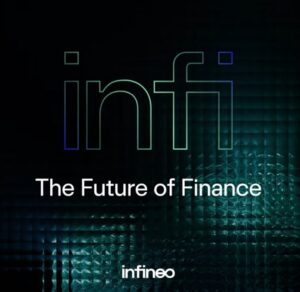
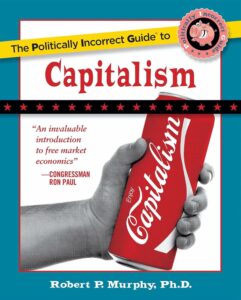
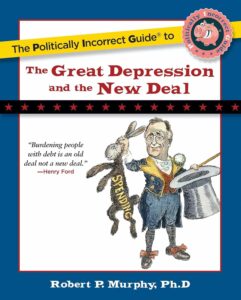
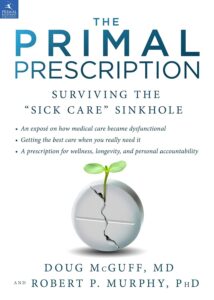
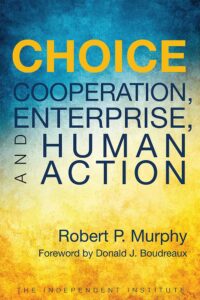
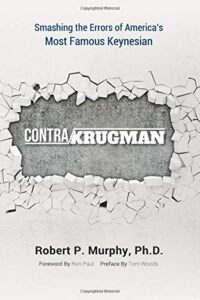
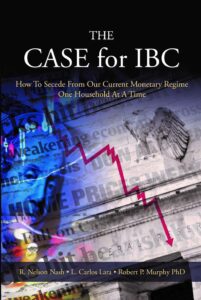
Recent Comments